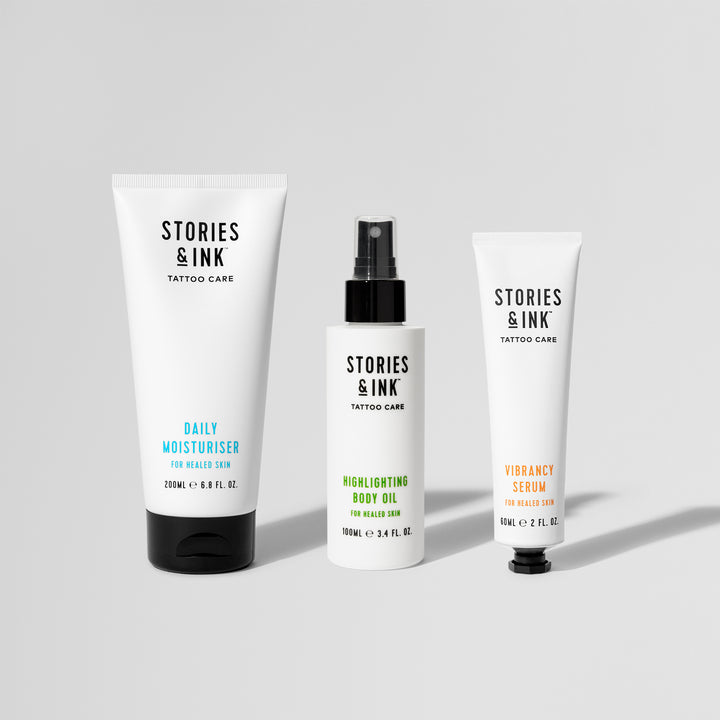
Paramedical tattooing, post-surgery tattooing, or reconstructive tattooing are all terms used to describe tattoos created to help clients heal from experiences that may leave them with a changed physical appearance.
A relatively new approach to tattooing, it developed from permanent makeup techniques, but paramedical tattooists have taken this to the next level.
Creating realistic areola tattoos for people who have undergone mastectomies or gender-affirming surgeries, restoring skin pigment in scarred areas, or even reconstructing a missing toenail, these tattoo artists help their clients to heal psychologically from physical procedures.
These tattoos can really help a person feel more whole again. To find out more about the process we spoke to Vancouver based tattooist Lynnea Kamyszek who specialises in reconstructive paramedical tattooing, as well as more traditional permanent makeup techniques...

My name is Lynnea, I'm living in a city just outside of Vancouver, Canada called Coquitlam. I am 25 years old and have been in the tattoo industry for just shy of 5 years, starting with microblading eyebrows in 2017. Since then, I've been leaning into the restorative side of the career with full restorative tattooed eyebrows and areola restorative tattooing.

How would you describe what paramedical/restorative tattooing is?
Paramedical tattooing, in my own words, is using tattooing to replace or create the illusion of restoring what a person once had, or may have not been born with. I've seen all kinds of new ones people may not think even exist, belly buttons, finger and toe nails are some new ones gaining popularity with more exposure!

What inspired you to begin doing this kind of tattooing?
Growing up, there was always two things I knew I wanted to be apart of my future career. I wanted to create art, and leave a positive impact doing so.
I started getting tattooed right when I turned 18, and eventually the wheels started turning that this was a potential avenue for me!
Fast-forward to 2020, Shaughnessy invited me to be apart of her team at Studio Sashiko after following her work for years, her work would definitely be considered my introduction to restorative and paramedical tattooing.
I began doing more and more restorative tattooing for eyebrows at Sashiko, using a tattoo machine to create dimensional and realistic brows. Besides the work itself being more fun to do- I felt the work, and the connection made was all the more meaningful for my clients.
Later in 2021, I began shadowing Shaughnessy and her areola restorative work. I knew that it was the next big step I needed to take. As soon as I started taking models under her guidance, it really felt natural to me. Being in that environment, was what really motivated me to take that next step, I could not have been in a better situation at a better time.

How does the process differ from more design-based tattooing in the traditional sense?
The process definitely has some differences. There are certain emotions that can arise when being apart of a moment that may have such a big impact on that person's life. Whether it be cancer, gender confirmation, auto-immune disorders, there is a level of empathy and compassion you need to have when discussing these topics with your clients. Keeping the environment comfortable when your client may be feeling very vulnerable is extremely important.
Typically, designs are hand-drawn on the client. Because we are restoring what may have once been on the body, we want it to form to them and feel natural- which may not always be something you can stencil on.
Reference photos are always welcome, whether it was areolas you had pre-surgery or dream ones found online! You can also have some fun with it, it does not always have to be serious. (Why not get heart shaped areolas if you're starting fresh?!)
Another big difference is the skin being worked on, some skin will be more scarred, gone through radiation, or even cadaver skin. these will all respond differently while being tattooed. Each client brings a new unique (and welcomed) challenge to be worked with.

How do these tattoos impact your clients' lives?
The emotions right at the appointment, and even after, can be overwhelming!
We definitely see a fair amount of happy tears, and I'm one to easily end up joining them. From what clients tell me, getting to have a piece of them back, even though it is purely visual, means more than words can describe. I've had clients go from telling me that they don't like looking at themselves after a shower, evolving to checking themselves out more than ever post restorative tattooing.
Restorative work can help bring closure to clients after going through various experiences. The mind is truly so powerful, seeing a part of your body look physically 'complete' as it once was, can really help healing mentally. It is a really beautiful experience to be apart of. I am always so grateful to be welcomed into someone's healing journey in this way.

What are the next steps for your career as an artist?
My next steps as an artist has so many paths to be taken, I'm always tossed up which way to go. My heart is leading me to more tattooing, I'm always wanting to do more with it.
I would love to be able to do restorative tattooing for a mastectomy client and create some beautiful florals around scarring to make a really beautiful piece. I've been tattooing smaller realism pieces on the side for a while now, it's just a matter of time for it to evolve.
Everything happens at the time it needs to, and when the effort and passion is put in, the rest comes easy.
